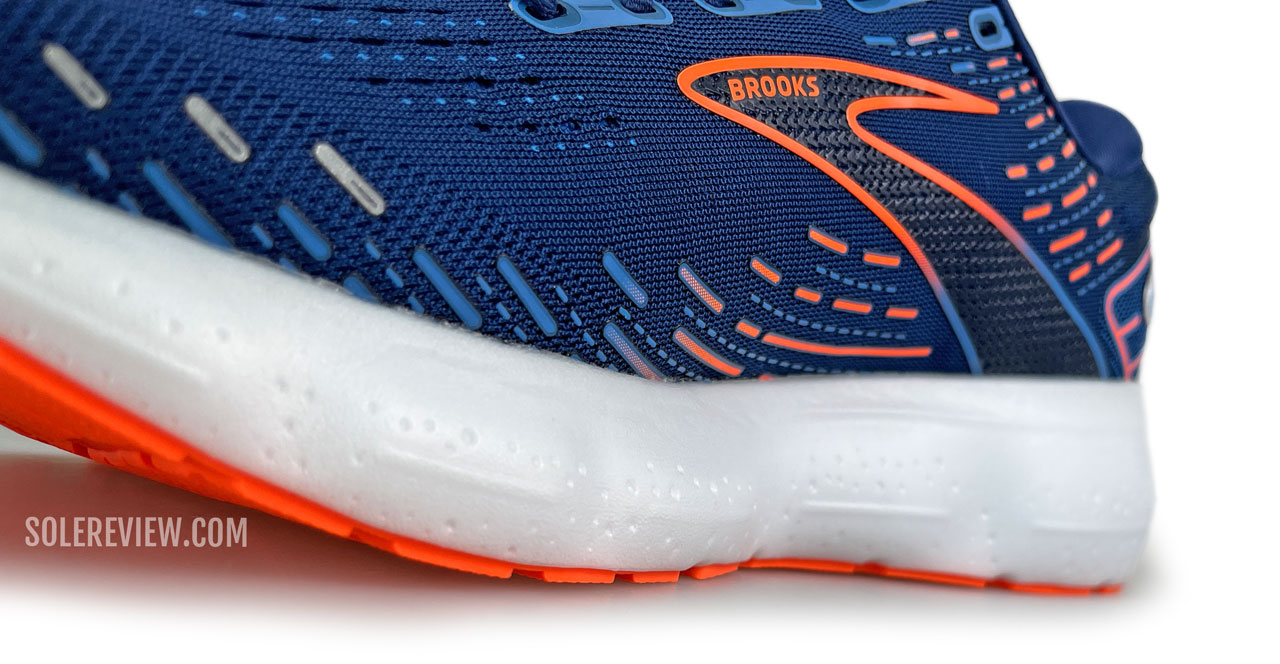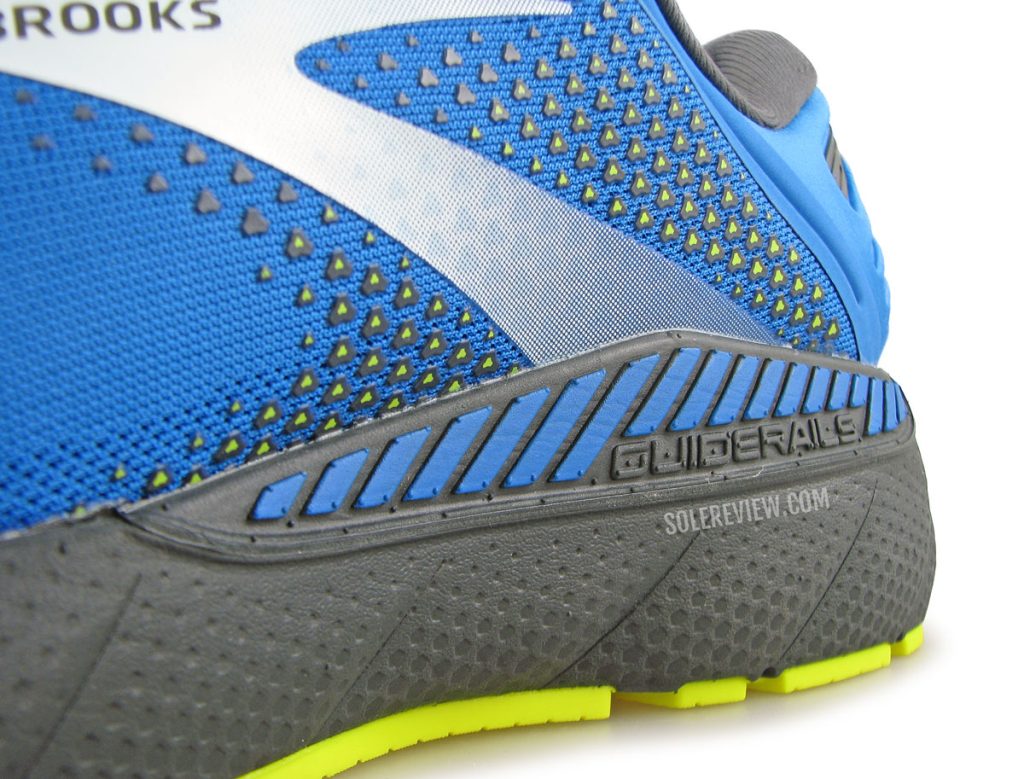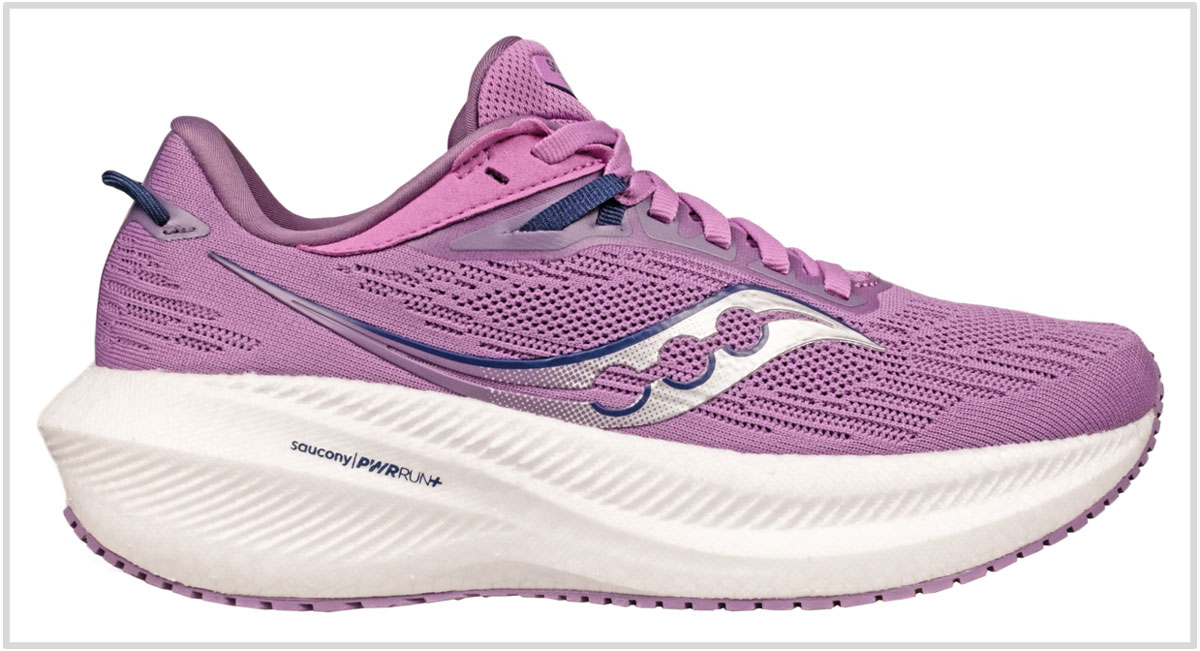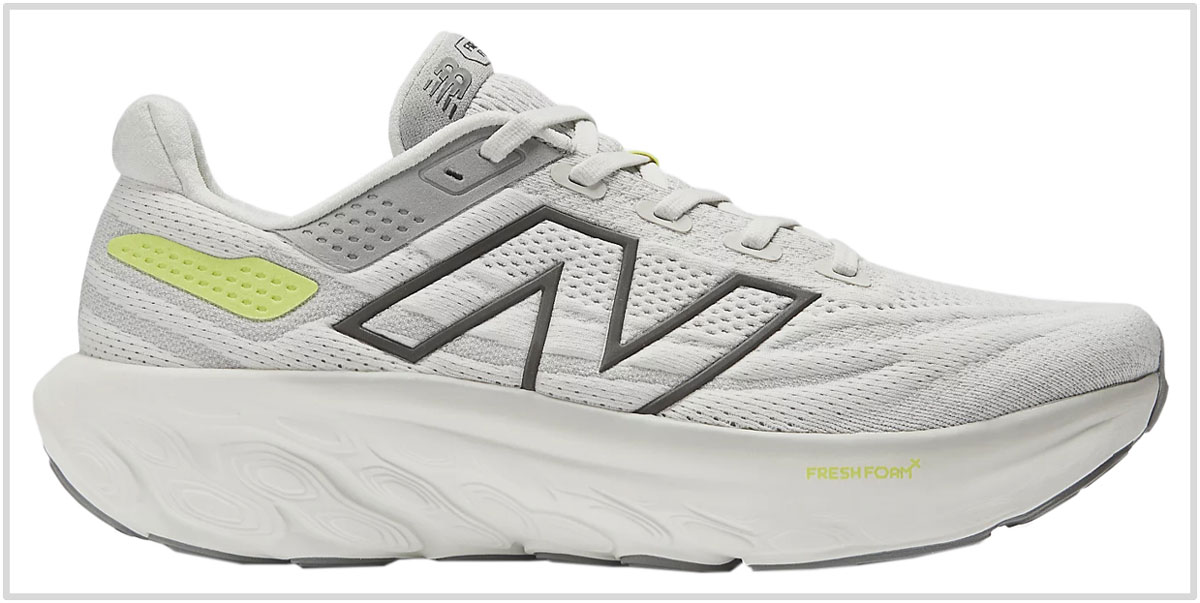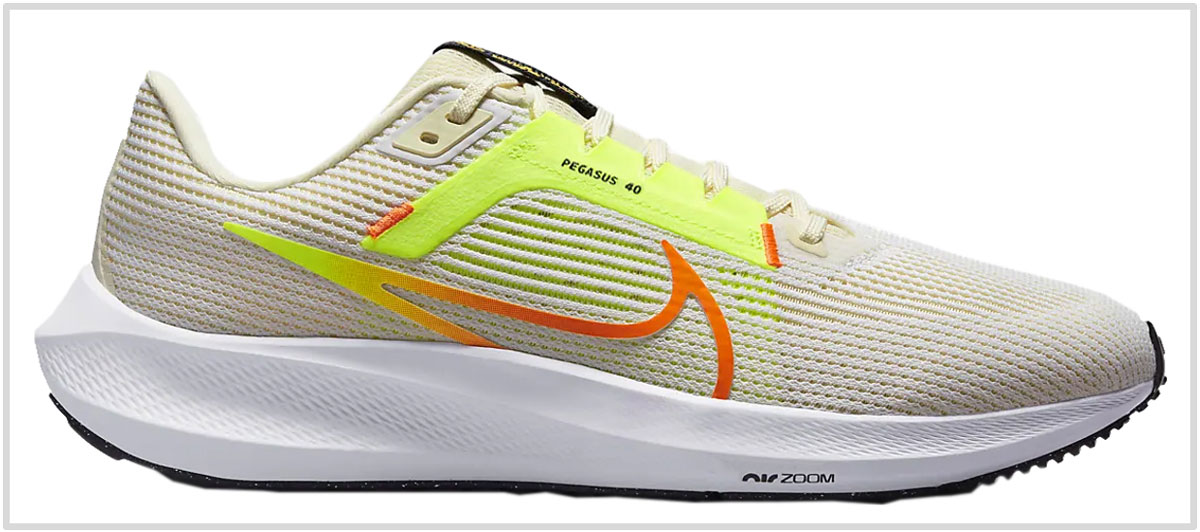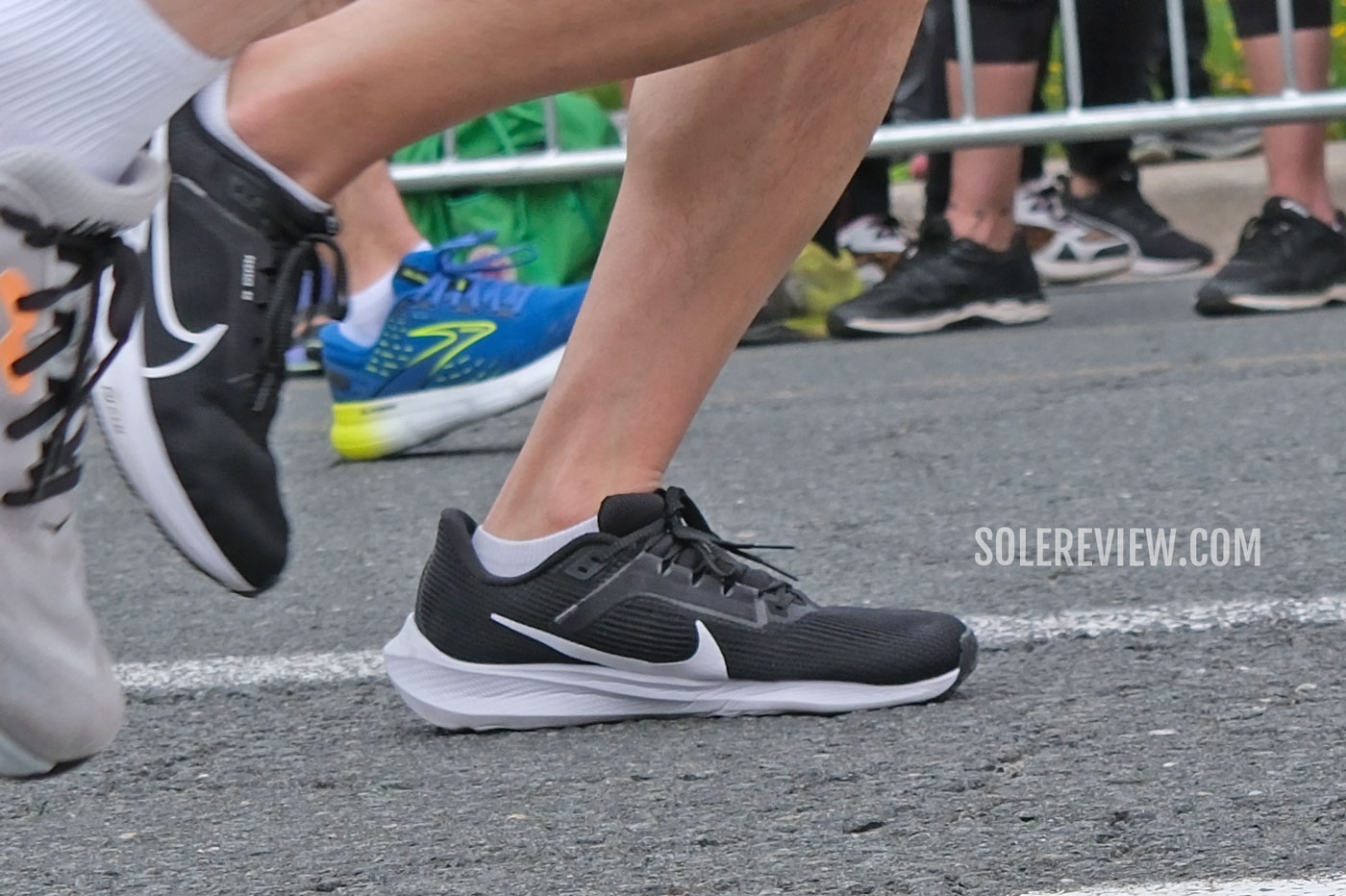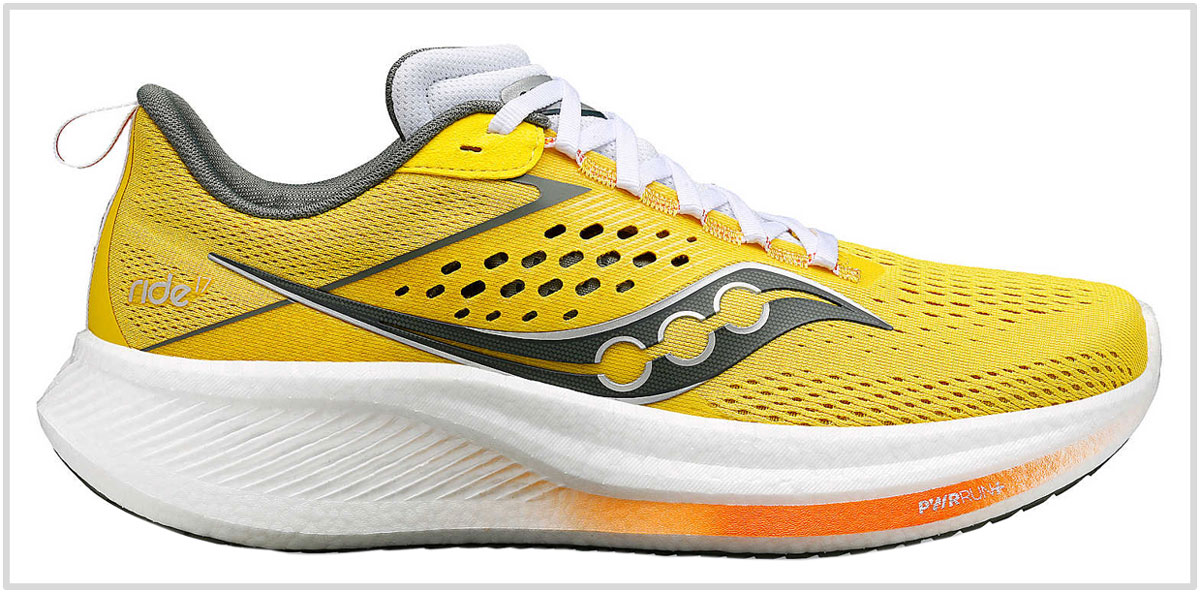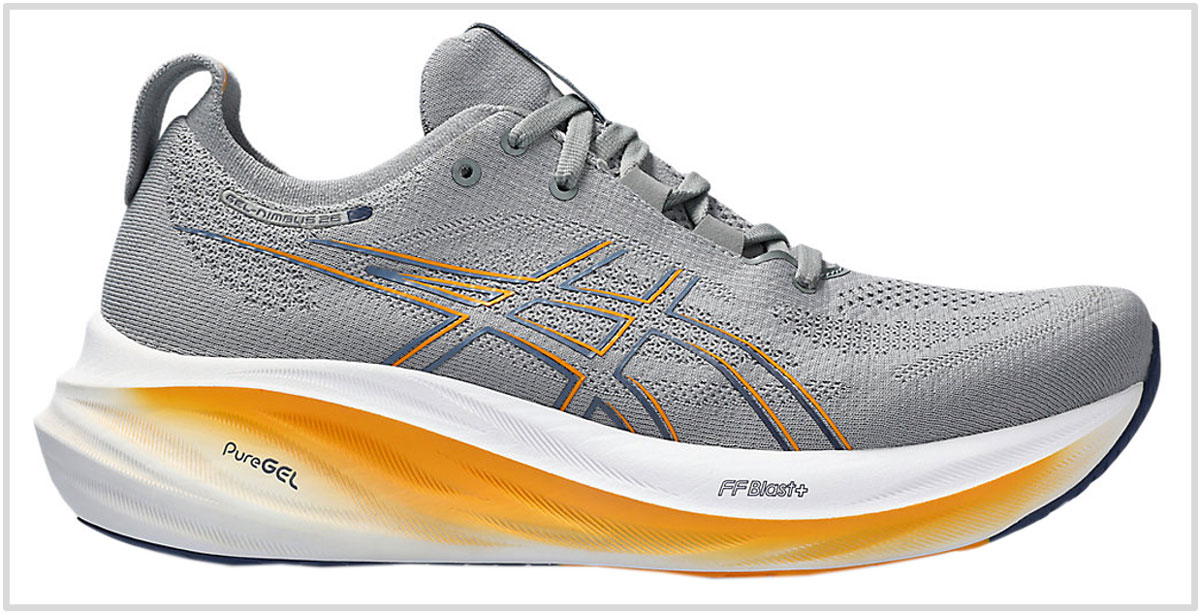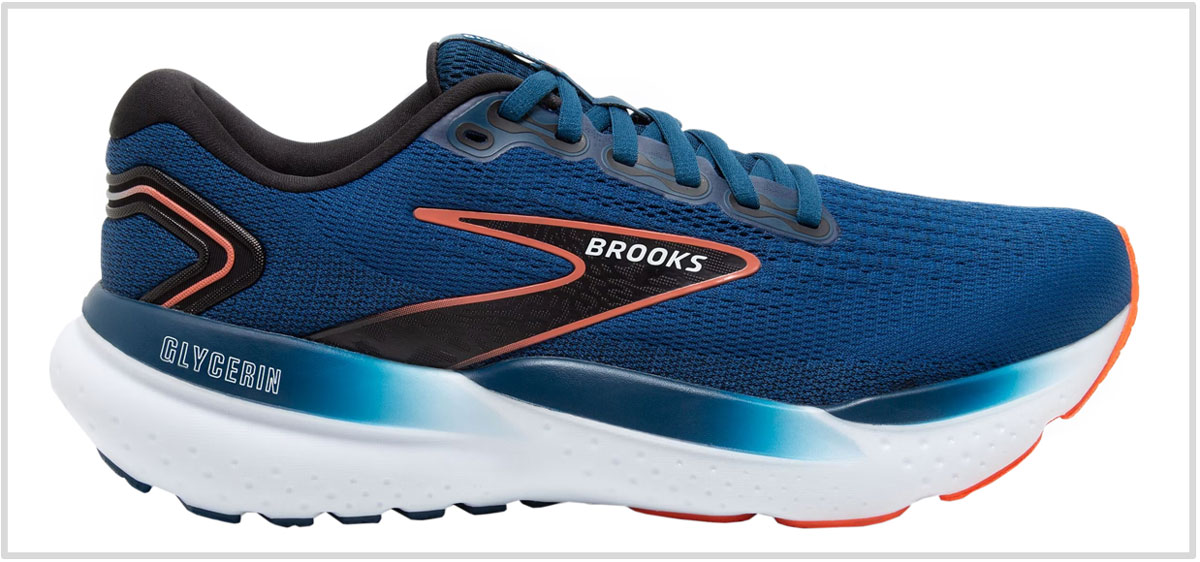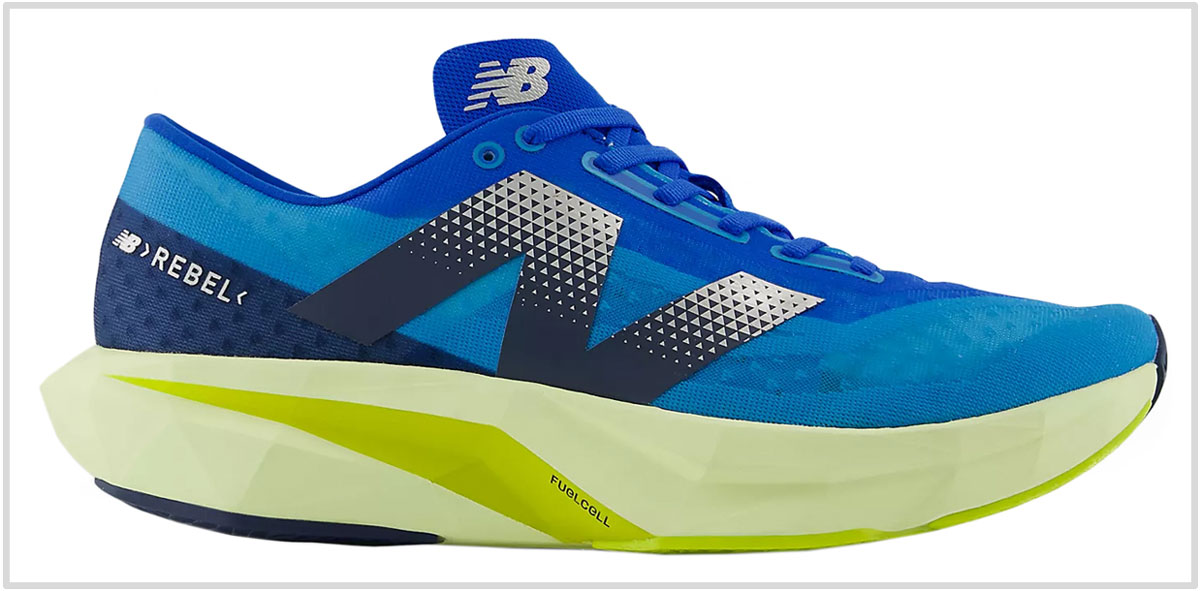This article has been updated with current models for March 2024. The Asics Nimbus 25, Brooks Glycerin 20, New Balance Rebel 3, and Saucony Ride 16 have been replaced with their updated versions. Except for the narrower ‘B’ width, the women’s models are almost identical to men’s.
In this product guide:
- 1. Factors to consider
- 2. Cushioned trainer for distance runs: Saucony Triumph 21
- 3. Cushioned trainer for distance runs: New Balance 1080V13
- 4. Versatile everyday trainer: Nike Pegasus 40
- 5. Versatile everyday trainer: Saucony Ride 17
- 6. Supportive daily trainer for heavy runners: Asics Nimbus 26
- 7. Supportive daily trainer for heavy runners: Brooks Glycerin 21
- 8. Lightweight low-drop trainer for daily runs: New Balance Rebel V4
Shoe brands make a killing selling products for runners who were supposed to be ‘over’ and ‘under’ pronators.
There is no scientific evidence to support the theory that runners should be matched with shoes based on how their foot pronates. Even today, many running shoe stores and brands will ‘analyze’ your gait and suggest a ‘suitable’ running shoe – all based on how your foot rolls during a run. This is such a flawed process.
For example, if the ‘gait analysis’ indicates that the extent of inward foot roll was minimal (supination/underpronation), then a neutral running shoe is likely to be recommended.
Conversely, a person with excessive foot roll (overpronation) would be paired with stability running shoes.
We’ve been saying for years that all this is hogwash. If you want proof, just look around. Brands are replacing traditional stability shoes with supportive neutral shoes.
Be it the Brooks Adrenaline GTS 23 or Nike Structure 25, the switch to supportive neutral shoes has been swift. In short, old-school stability shoes have been a lie all along.
The same logic applies to supinator-friendly running shoes.
Conventional wisdom states that a person with a supinating foot (with a limited inwards roll) should be matched with a soft, neutral shoe. In industry parlance, a neutral shoe lacks ‘stability’ features like a medial post.
Does this approach work? If the shoe is cushioned, supportive, and fits well, then most runners should have no problem. Having said that, a running shoe is not going to have a significant effect on your gait – unless the shoe is extremely soft or doesn’t fit the way it should.
If you want to head down this rabbit hole, let us help you. Our guides for the best neutral shoes and runners with high arches cover a similar category of shoes.
High arches and supination are often used interchangeably, so why do two different buyer’s guides exist? Well, even high-arched runners can over-pronate, so both circumstances shouldn’t be conflated.
Based on our experience, all supportive neutral running shoes are a safe bet. This is regardless of whether you classify yourself as someone with supination or over-pronation.
1) Cushioned high-mileage trainer: Saucony Triumph 21
Except for the more conforming upper fit, the Saucony Triumph 21 is almost identical to the Saucony Triumph 20. Both shoes share the full-length Pwrrun+ midsole and grippy outsole that makes them ideal shoes for underpronators.
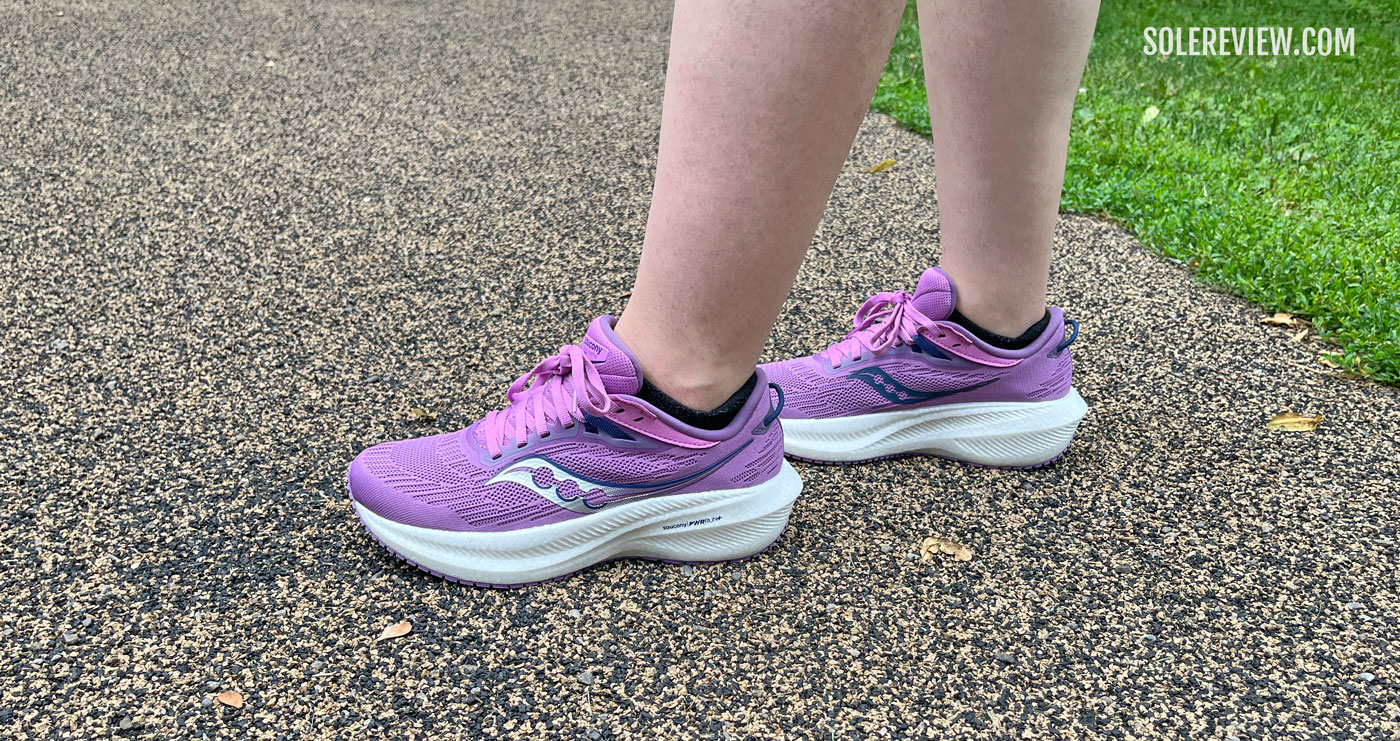
The neutral character of the resilient Pwrrun+ cushioning of the Triumph 21 is ideal for supinators.
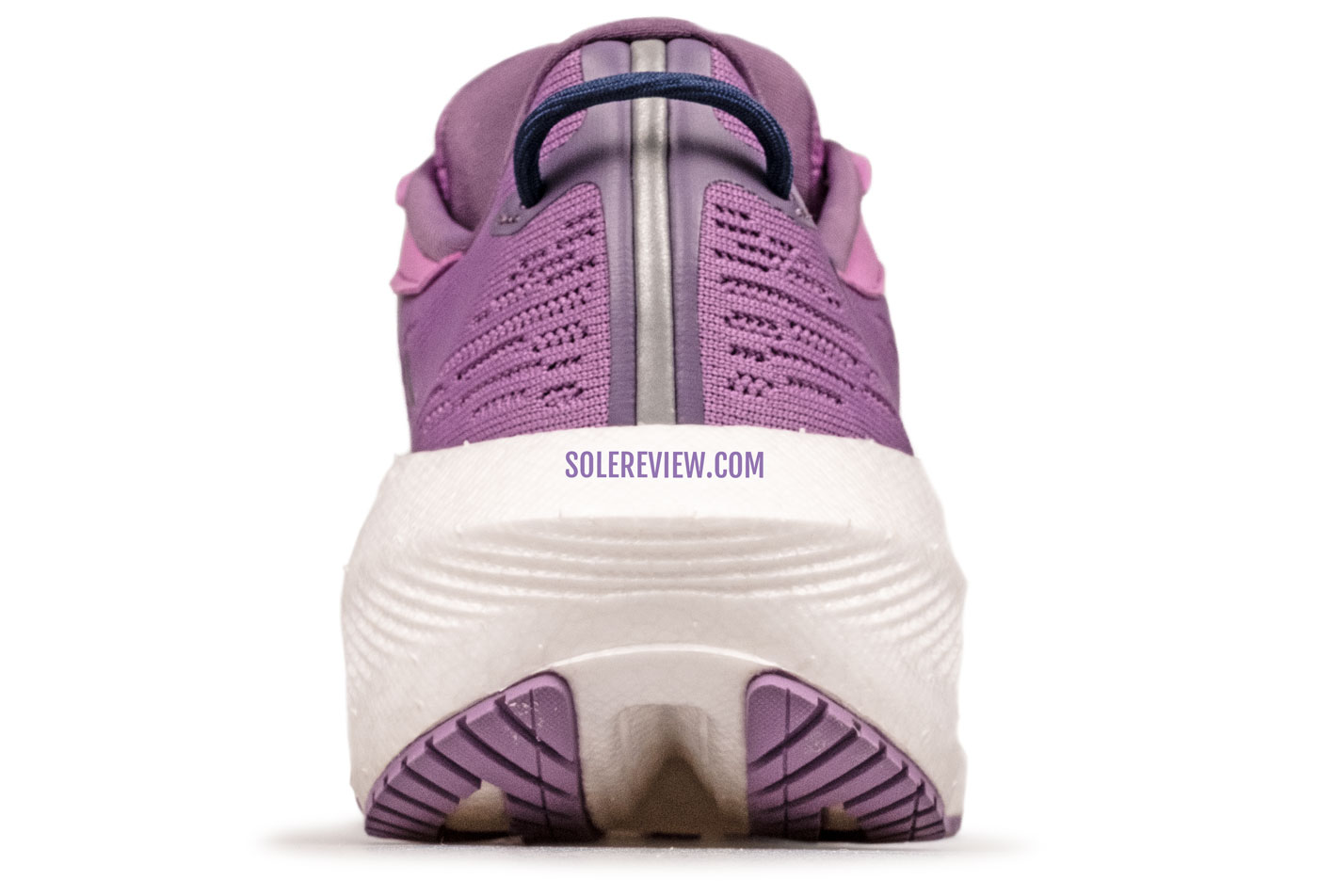
Despite its height, the midsole delivers a very neutral ride. It’s adequately supportive for what it is.
The neutral character of the cushioned midsole doesn’t control the gait pattern. The expanded Polyurethane midsole is comfortable enough for up to a marathon, and is supportive due to its wide footprint and raised sidewalls that cup the foot.
The true-to-size upper is plush and secure; the Triumph 21 fits snugger than the 20 because of its fully-sleeved construction. The Triumph 20 only had a partial gusset, so there was more room inside the forefoot and toe-box. Our in-depth review of the Triumph 21 explains the differences.
2) Cushioned high-mileage trainer: New Balance 1080V13
The New Balance 1080 has always been a good fit for supinators, thanks to the non-prescriptive nature of its midsole. In short, the midsole doesn’t try to control the gait, but rather helps cushion the foot naturally.
Sure, this is a very soft running shoe – more so than the 1080V12 due to the extensively reworked midsole. However, that doesn’t change the fact that the Fresh Foam midsole helps the foot roll inwards naturally. There are no raised midsole edges or stability features on the inner midsole.
Its soft cushioning doesn’t feel slow, so the 1080V13 is very versatile for what it is. It’s an excellent shoe for long runs and marathons, while being a reliable everyday trainer.
Just know that the new upper fits narrower than the 1080V12 due to the change of mesh. Unlike the last time, the V13’s upper isn’t made of an elastic mesh, so the forefoot isn’t as accommodating. A 2E (wide) or 4E (extra-wide) is optional, though.
3) Versatile everyday trainer: Nike Pegasus 40
The Pegasus 40 happens to be just a slightly updated version of the Pegasus 39.
Like the last time, the two Zoom Air bags inside a comfortable React midsole make it a true neutral running shoe with a balanced cushioning delivery. Our in-depth review explains what makes the Pegasus 40 such a versatile everyday trainer.
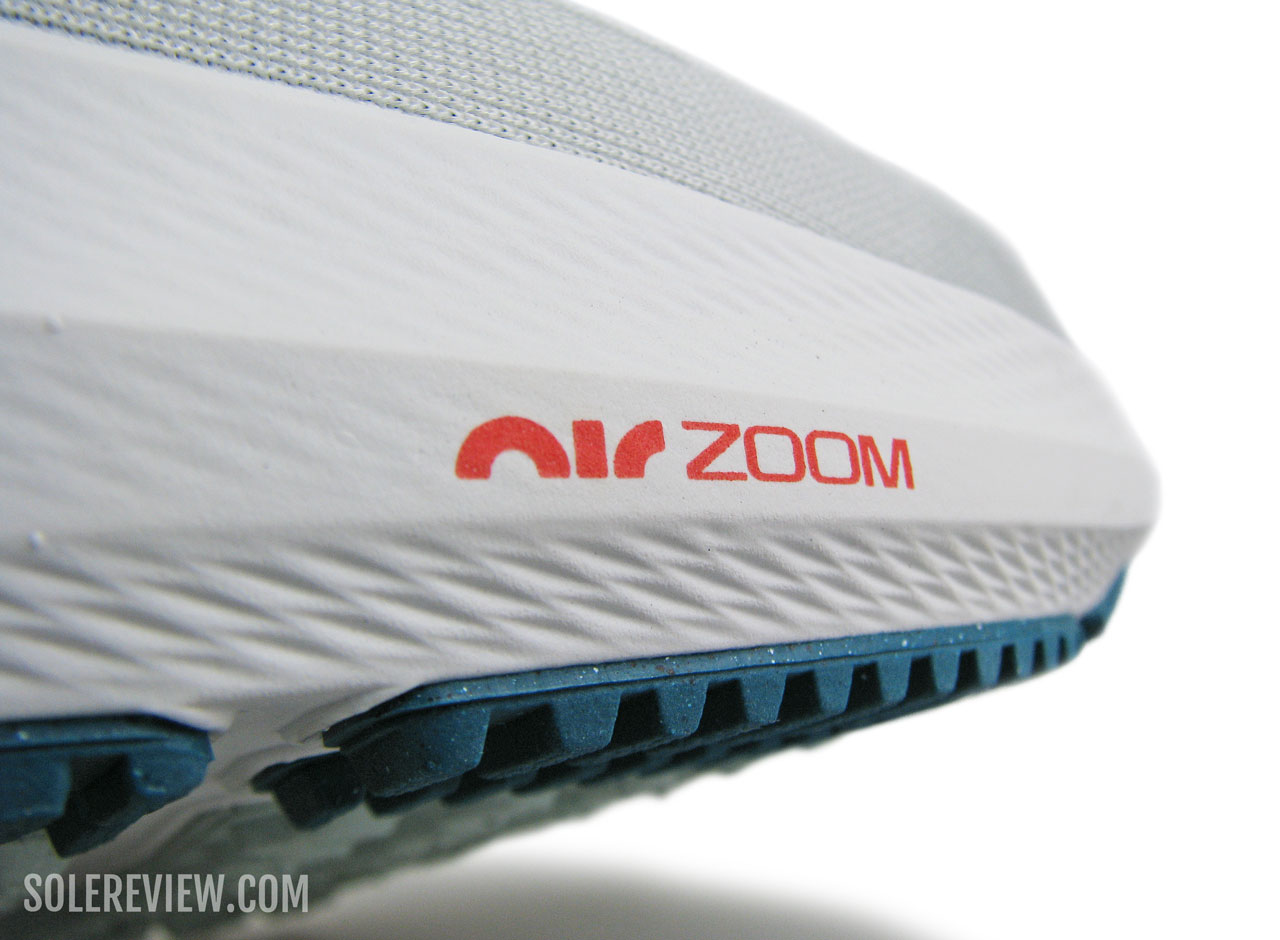
There’s a Zoom Air bag under the heel and forefoot for a balanced cushioning feel.
The supportive midsole with its just-right softness makes the Pegasus 40 comfortable and versatile enough for most gait types.
The Pegasus 40 is an excellent shoe to do it all – be it everyday runs or slightly spirited workouts. Its versatility for various foot-strike and gait patterns is the reason why it deserves a mention.
4) Versatile everyday trainer: Saucony Ride 17
Now in its 17th year, the Saucony Ride gets a complete makeover. The midsole is now made of Pwrrun+ – the same material that’s on the Triumph 21. It has a similar ride as the Triumph 21, but with a slightly slimmer midsole and less plush upper.
So in many ways, the Ride 17 is like a Triumph Lite – a versatile everyday trainer with a responsive ride. The midsole has a lot more ‘life’ than the flat ride quality of the Ride 16 and 15. The expanded PU foam is durable as well as temperature-resistant, meaning that it won’t firm up during freezing winters.
The new midsole extends the Ride 17’s capabilities by making it a better long-distance running shoe than the previous model.
The breathable upper has a lighter and more minimal construction than the Triumph 21. The ventilated mesh regulates temperature while keeping the foot locked in.
5) Supportive trainer for heavy runners: Asics Nimbus 26
Despite the new midsole and upper for 2024, the Nimbus 26 is very similar to the Nimbus 25. In other words, it is a highly cushioned shoe with a supportive and neutral character. Its ‘neutral’ quality doesn’t interfere with the gait cycle and lets the foot transition naturally.
The Nimbus 26 isn’t just about its balanced cushioning. The ride comfort is packaged in a transition-friendly midsole, just like how the Nimbus 25 was.
The outsole grip is a minor improvement over last year, and so is the upper ventilation.
6) Cushioned trainer for heavy runners: Brooks Glycerin 21
The Brooks Glycerin 21 hits the sweet spot of running shoes. With a ride that blends cushioning comfort and ride smoothness, the Glycerin’s road manners are polite enough to please most runners. As a bonus, it’s very neutral and supportive as well; a quality that works well for supinators.
As a result, it works as a reliable daily workhorse for most distances. This time, the DNA Loft midsole foam is noticeably softer than the Glycerin 20 – a shoe that we found to be rather firm.
Brooks has done a nice job with the upper as well. The knit mesh exterior combines rearfoot plushness with a smooth, seam-free interior.
Also see: Puma Magnify Nitro 2.
7) Lightweight, low-drop trainer: New Balance Rebel V4
So far, most shoes in this guide are mid-weight trainers. But what if you wanted a lightweight and efficient running shoe with a low heel-to-toe offset? One that is also comfortable for up to 10K distances?
The New Balance Rebel 4 fits that description. It’s worth noting that the Rebel V4 is nothing like the Rebel V3. The updated midsole foam and geometry make it a very different shoe than the V3.
For starters, the Rebel V4’s foam is firmer. Also, it has a wider midsole with a rocker forefoot, something that the Rebel V3 lacked. Most importantly, the foot had to do most of the work on the Rebel V3. That’s not the case here, as the rocker midsole helps the foot roll forward.
The balanced midsole sidewalls produce a neutral ride without any bias, and the responsive Fuelcell foam makes the shoe comfortable enough for up to a half marathon. This neutral-supportive character makes the Rebel 4 suitable for most gait types and foot strikes.
The lightweight and breathable upper is secure-fitting and true to size.
Do you own this shoe? Improve this review by sharing your insights.


